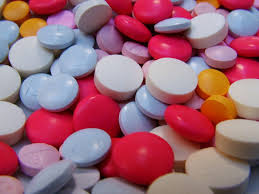Symptom Finder - Face Mass
FACE MASS
To develop a list of possible causes of a face mass, let us turn to anatomy. The face is composed of skin, subcutaneous tissues, muscle, bone, teeth, the sinuses, salivary glands, arteries, veins, and nerves. Applying the mnemonic VINDICATE to each one of these structures, we can come up with an excellent list of possibilities.
Skin and subcutaneous tissues—Carbuncles, cellulitis, sebaceous cysts; lipomas, carcinomas, angioneurotic edema, and so forth.
Muscle—Myositis, myomas, hypertrophy
Bone—Osteomas, metastatic tumor, multiple myelomas, osteomyelitis
Teeth—Dental abscess, neoplasm
Sinuses—Wegener midline granuloma, mucormycosis, neoplasm
Salivary glands—Mumps, tumors, calculus, Mikulicz syndrome, Sjögren syndrome
Arteries and veins—Hemangiomas, arteriovenous fistula
Nerves—Neuroma, neurofibromatosis
Approach to the Diagnosis
If infection is suspected, smears and cultures of exudates should be done. X-rays of the skull, sinuses, and jaw may be helpful. A computed tomography (CT) scan will be more definitive. If neoplasm or granuloma is suspected, a biopsy or excision will be necessary. If there is still doubt about the etiology, an oral surgeon or otolaryngologist should be consulted.
Other Useful Tests
1. Complete blood count (CBC) (infection)
2. Sedimentation rate (abscess, osteomyelitis)
3. Chest x-ray (tuberculosis, Wegener granulomatosis)
4. Chemistry panel (multiple myeloma)
5. Blood cultures (osteomyelitis)
6. X-ray of the teeth (dental abscess)
7. Trial of epinephrine and antihistamines (angioneurotic edema)
339
8. Sialography (salivary gland duct calculus)
9. Cytoplasmic antineutrophil cytoplasmic antibody (C–ANCA) test (Wegener granulomatosis)
10. Rheumatoid arthritis (RA) test, anti-Ro (SSA)–antibodies (Sjögren syndrome)
To develop a list of possible causes of a face mass, let us turn to anatomy. The face is composed of skin, subcutaneous tissues, muscle, bone, teeth, the sinuses, salivary glands, arteries, veins, and nerves. Applying the mnemonic VINDICATE to each one of these structures, we can come up with an excellent list of possibilities.
Skin and subcutaneous tissues—Carbuncles, cellulitis, sebaceous cysts; lipomas, carcinomas, angioneurotic edema, and so forth.
Muscle—Myositis, myomas, hypertrophy
Bone—Osteomas, metastatic tumor, multiple myelomas, osteomyelitis
Teeth—Dental abscess, neoplasm
Sinuses—Wegener midline granuloma, mucormycosis, neoplasm
Salivary glands—Mumps, tumors, calculus, Mikulicz syndrome, Sjögren syndrome
Arteries and veins—Hemangiomas, arteriovenous fistula
Nerves—Neuroma, neurofibromatosis
Approach to the Diagnosis
If infection is suspected, smears and cultures of exudates should be done. X-rays of the skull, sinuses, and jaw may be helpful. A computed tomography (CT) scan will be more definitive. If neoplasm or granuloma is suspected, a biopsy or excision will be necessary. If there is still doubt about the etiology, an oral surgeon or otolaryngologist should be consulted.
Other Useful Tests
1. Complete blood count (CBC) (infection)
2. Sedimentation rate (abscess, osteomyelitis)
3. Chest x-ray (tuberculosis, Wegener granulomatosis)
4. Chemistry panel (multiple myeloma)
5. Blood cultures (osteomyelitis)
6. X-ray of the teeth (dental abscess)
7. Trial of epinephrine and antihistamines (angioneurotic edema)
339
8. Sialography (salivary gland duct calculus)
9. Cytoplasmic antineutrophil cytoplasmic antibody (C–ANCA) test (Wegener granulomatosis)
10. Rheumatoid arthritis (RA) test, anti-Ro (SSA)–antibodies (Sjögren syndrome)

